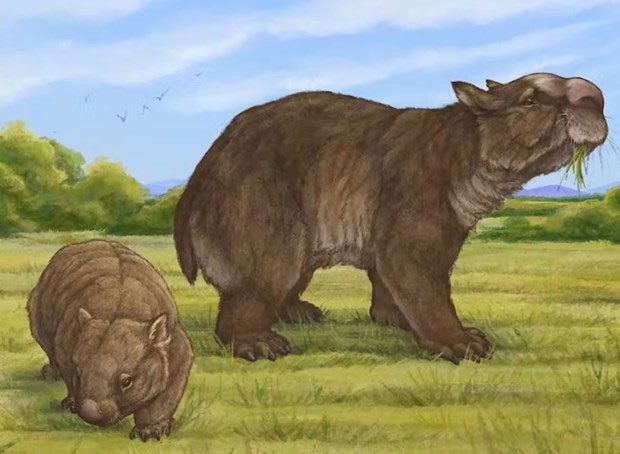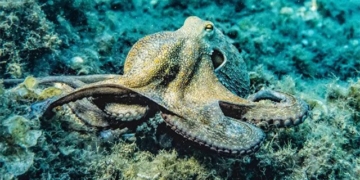Researchers in Australia have the opportunity to reconstruct the appearance and habitat of the giant marsupial Ramsayia, as well as to determine the period during which they lived and their evolutionary process.
Australian paleontologists have discovered the first complete fossil remains of an ancient giant marsupial, providing scientists with new insights into this little-known colossal animal.

Reconstruction of the giant marsupial Ramsayia (right) alongside a modern marsupial. (Source: The Conversation).
In a paper published in the scientific journal *Papers in Palaeontology* on December 12, a research team from the Human Evolution Research Center at Griffith University reported that through the analysis of the skull of the species Ramsayia magna, found in Johannsen’s Cave in Queensland in the early 2000s, they estimate that this bear species appeared approximately 80,000 years ago.
The researchers noted that Ramsayia is one of three species of giant marsupials known to science. However, previously, this species was only identified by researchers based on specimens of isolated teeth and jaws.
The study’s author, paleontologist Julien Louys at Griffith University, emphasized that the discovery of the most complete skull of the giant marsupial Ramsayia provides researchers with the opportunity to reconstruct the appearance and habitat of this animal, as well as to determine the period during which they lived and their evolutionary history in Australia.
Paleontologist Louys indicated that through analysis and the discovery of wide cranial cavities, the research team hypothesized that the Ramsayia marsupial had a large, rounded skull adapted for strong chewing muscles.
Ramsayia also possessed a front jawbone, indicating that they had a large, fleshy nose.
According to Louys, the study points out that all species of giant marsupials actually evolved in body size first, and then each species specialized to consume different types of grasses.
The researchers also confirmed that Diprotodon, an extinct species the size of a small car and a distant relative of marsupials, is often thought to be a giant marsupial of Australia, but this is inaccurate as Diprotodon belongs to an entirely different family.
Moreover, the researchers noted that the giant marsupial Ramsayia appeared long before humans set foot in Australia, although they have not yet determined the precise cause and timing of this animal’s extinction.





















































